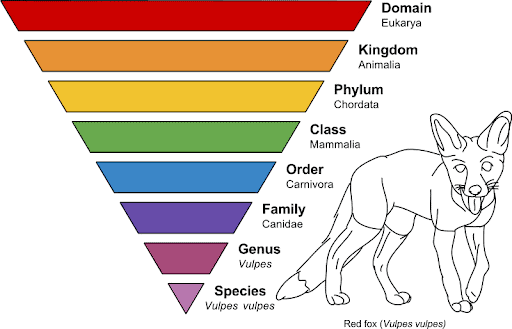Starting Unit 3 of QCAA Biology but aren’t too familiar with what it’ll cover? Don’t stress — we’ve got you!
We’ll be breaking down what each of the topics you’ll study involve and equip you with the right guides to help you tackle your assessments for QCAA Biology Unit 3.
So what are you waiting for? Let’s get started!
What is Unit 3 in QCAA Biology all about?
Topic 1: Describing Biodiversity
Topic 2: Ecosystem Dynamics
QCAA Biology Unit 3 Assessments
Study Tips
What is Unit 3 in QCAA Biology all about?
In Unit 3, there is a strong focus on connection and how various components of an ecosystem interact with each other to allow for the effective functioning of communities of plants and animals. In particular, we are interested in concepts such as biodiversity, population dynamics, and how we classify and identify organisms.
The hope is that these newfound understandings of the structure of ecosystems will aid in the development of our knowledge on processes involving the movement and transformation of energy and matter throughout ecosystems. By the end of the unit, we should be able to appreciate the dynamics and diversity that provide the foundations of harmonious communities to arise!
The knowledge gained should be applied in order to compare ecosystems across spatial and temporal scales by analysing and interpreting data. Our analyses should show insight into our understanding of the interconnectedness that allows for ecosystems to function.
A major context that should be investigated is that of the impact that humans have on the biosphere — particularly with regard to biodiversity and ecosystem management.
Topic 1: Describing Biodiversity
This topic is composed of two subtopics, and focusses on the concept of biodiversity (concerning both species and ecosystems). Additionally, it touches on the different measures of diversity and how various factors impact diversity!
Biodiversity
Within this subtopic, you will develop your understanding of biodiversity and how this links not only to species but also entire ecosystems. You will learn how to implement different measures of species diversity, including:
- Species richness
- Relative species abundance
- Percentage cover and frequency
- Simpson’s Diversity Index
The formula for Simpson’s Diversity Index, which you should become very familiar with using, is as follows:
SDI = 1 – ((Σn(n – 1))/N(N – 1))
These measures can then be used, along with your knowledge of species interactions (i.e. predation, competition, symbiosis, disease), and abiotic factors, to compare ecosystems across temporal (time) and spatial (location) scales.
It will also be important to consider how environmental limiting factors will influence not only the distribution of species but also abundance of species in an ecosystem. In topic two, you will also consider how the factors regulate population sizes for species.
Key Takeaways
- Become familiar with the concept of biodiversity
- Understand and determine the measures of diversity and be able to use these measures in your analysis of data
- Understand how a number of factors influence the distribution of species in an ecosystem
Classification Processes
This subtopic is quite a content-heavy one. Firstly, it requires you to describe various classification systems and recognise their key features (i.e., whether they are hierarchical in nature, or based on physical similarities/methods of reproduction/molecular sequences).
Notably, we are interested in the Linnaean system (which can be seen in the image below), asexual VS sexual reproduction and K VS r-selection, and molecular phylogeny/cladistics.
Image sourced from Woo! Jr
When looking at cladistics, it’s also important that you are familiar with what a clade is, as well as the three primary assumptions of cladistics.
You will also learn how to determine the relatedness of individuals, through cladogram and molecular sequence analysis. You will also be able to classify organisms on the basis of their interactions — predation, competition, symbiosis, disease.
With regard to ecosystems, you will be able to recognise that they are composed of varied habitats — ranging from microhabitats all the way to ecoregions. You will also learn about the management of old-growth forests, productive soils and coral reefs, and the role that ecosystem classification plays in ensuring the management of these ecosystems is performed effectively.
Stratified sampling is also a process you will become familiar with during this topic.
Key Takeaways
- Become familiar with both species and ecosystem classification systems
- Be able to analyse data to determine evolutionary relatedness
- Understand how ecosystem classification is important with regard to ecosystem management
- Familiarise yourself with the processes of stratified sampling
Topic 2: Ecosystem Dynamics
This topic is composed of three subtopics, and focusses on the importance of interactions between organisms, as well as the environment, for the functioning of the ecosystem. Additionally, it has a focus on how ecosystems develop and change over time, as well as how populations are regulated by environmental factors.
Functioning Ecosystems
This subtopic is related to the transfer of energy and matter through an ecosystem, as well as interactions between organisms and how these interactions impact the functioning of an ecosystem!
You will learn about how biomass and energy flows through an ecosystem, through the trophic levels, and will be able to calculate energy transfers based on food chains/webs/pyramids. Additionally, you will develop a greater understanding of the water, carbon and nitrogen cycles.
Image sourced from Socratic.org
You will also develop an understanding of ecological niches and how these play a role in the competitive exclusion principle. Additionally, you should become familiar with the idea of keystone species.
Key Takeaways
- Understand energy and matter transfers and transformations throughout ecosystems
- Be able to calculate energy transfers
- Understand niches and their implications
- Understand the role of keystone species and predict the effect of their removal
Population Ecology
This subtopic is focussed on population growth, as well as the factors impacting population size. For this, the key concept of interest is carrying capacities.
You should be able to explain how biotic and abiotic factors influence the carrying capacity of an ecosystem. You will learn to analyse population growth data in order to determine whether the population growth is exponential or logistic.
Further, using birth, death, immigration and emigration data, you should be able to calculate population growth rates. You will also learn about the Lincoln Index and how to use it to estimate population sizes:
N = (n1 * n2)/M
Key Takeaways
- Understand and explain the factors that limit and influence population growth
- Be able to estimate population sizes using the Lincoln Index and calculate population growth rates based on data
Changing Ecosystems
In this subtopic, we are interested in how ecosystems develop and change over time. You will become familiar with the concept of ecological succession and will learn about its two modes: primary and secondary succession.
When learning about primary succession, you will investigate the features of pioneer species that allow them to colonise bare ground.
You will also further develop your analytical skills by using data to determine past ecosystem changes as well as predicting future ecosystem changes.
Key Takeaways
- Understand that ecosystems change overtime and in response to a number of factors
- Analyse data to determine past change and predict future change
That was a tonne of information! Learn how to properly recall it all by using solid science study notes!
QCAA Biology Unit 3 Assessments
Within this unit, there are two types of assessments that you will need to complete. These are your data test and your student experiment!
Get insight about what marks you need to achieve on these internal assessments by using our QCE Cohort Comparison Tool!
Data Test
For the data test, they are more interested in your ability to analyse data and trends — rather than whether or not you can regurgitate large chunks of information. The answers for almost every question will be on the page in front of you, it is up to you to identify it.
Get a head start on this assessment by checking out our practice data test questions here!
Student Experiment
For the student experiment, you will need to start linking your newfound analytical skills to the theory you have been learning. You can think of this as a slightly longer data test, where you are only focussed on one, maybe two, sets of data.
For guidance on how to ace this task, check out our guide to writing a student experiment here!
Tips for Study
The biggest tip for studying Biology is to mind-map everything! All the content you will learn across Units 3 & 4 are connected. Finding these connections makes memorisation so much easier.
We’ve got a number of tips in this article on how to ace your external exam that should be implemented throughout the entire year to give yourself the greatest chance at success!
Are you looking for some extra help with revising QCAA Biology Unit 3?
We have an incredible team of QLD Biology tutors and mentors!
We can help you master the QCAA Biology syllabus and ace your upcoming Biology assessments with personalised lessons conducted one-on-one in your home or online!
We’ve supported over 8,000 students over the last 11 years, and on average our students score mark improvements of over 20%!
To find out more and get started with an inspirational QLD tutor and mentor, get in touch today or give us a ring on 1300 267 888!
Katelyn Smith was a pioneer in the Queensland ATAR system. After graduating in 2020 with an ATAR of 98.40, she now studies a Bachelor of Advanced Science (Honours) at The University of Queensland — majoring in Physics. Through her studies, she hopes to develop a greater appreciation for how the wonders of the universe work. When she isn’t slaving away behind her unnecessarily large textbooks, she enjoys catching up with friends, scrolling mindlessly through TikTok, and sleeping.





